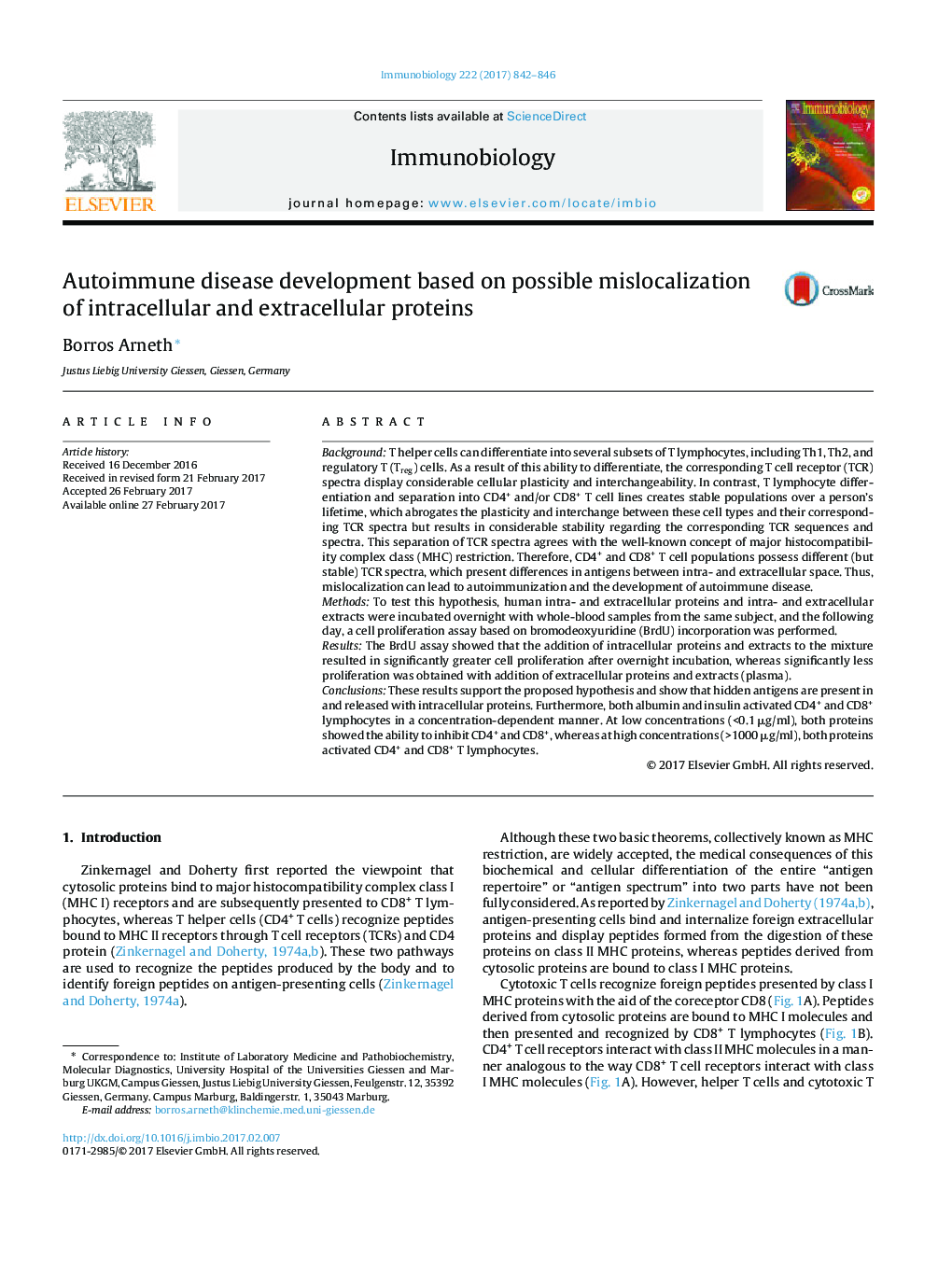| کد مقاله | کد نشریه | سال انتشار | مقاله انگلیسی | نسخه تمام متن |
|---|---|---|---|---|
| 5532719 | 1402068 | 2017 | 5 صفحه PDF | دانلود رایگان |
BackgroundT helper cells can differentiate into several subsets of T lymphocytes, including Th1, Th2, and regulatory T (Treg) cells. As a result of this ability to differentiate, the corresponding T cell receptor (TCR) spectra display considerable cellular plasticity and interchangeability. In contrast, T lymphocyte differentiation and separation into CD4+ and/or CD8+ T cell lines creates stable populations over a person's lifetime, which abrogates the plasticity and interchange between these cell types and their corresponding TCR spectra but results in considerable stability regarding the corresponding TCR sequences and spectra. This separation of TCR spectra agrees with the well-known concept of major histocompatibility complex class (MHC) restriction. Therefore, CD4+ and CD8+ T cell populations possess different (but stable) TCR spectra, which present differences in antigens between intra- and extracellular space. Thus, mislocalization can lead to autoimmunization and the development of autoimmune disease.MethodsTo test this hypothesis, human intra- and extracellular proteins and intra- and extracellular extracts were incubated overnight with whole-blood samples from the same subject, and the following day, a cell proliferation assay based on bromodeoxyuridine (BrdU) incorporation was performed.ResultsThe BrdU assay showed that the addition of intracellular proteins and extracts to the mixture resulted in significantly greater cell proliferation after overnight incubation, whereas significantly less proliferation was obtained with addition of extracellular proteins and extracts (plasma).ConclusionsThese results support the proposed hypothesis and show that hidden antigens are present in and released with intracellular proteins. Furthermore, both albumin and insulin activated CD4+ and CD8+ lymphocytes in a concentration-dependent manner. At low concentrations (<0.1 μg/ml), both proteins showed the ability to inhibit CD4+ and CD8+, whereas at high concentrations (>1000 μg/ml), both proteins activated CD4+ and CD8+ T lymphocytes.
Journal: Immunobiology - Volume 222, Issue 7, July 2017, Pages 842-846
